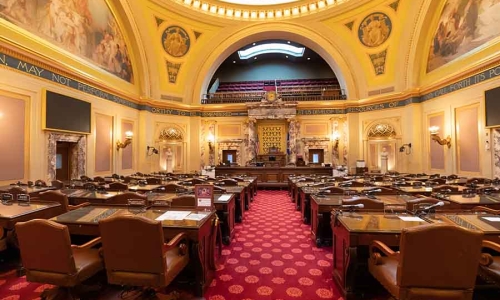How has Legalizing Cannabis in the USA Impacted the National Economy

National Election Looms as Cannabis Legalization Impacts GDP and Economy.
As we get ready for another national election this year in November, one of the topics in the smokey rooms will be America’s GDP (Gross Domestic Product) and whether the legislation legalizing cannabis in certain regions helped or hurt the local/national economy. Inside the federal government itself, historic action has been taken by the U.S. Department of Health and Human Services in recommending to the Drug Enforcement Administration to drop the classification of weed/THC/cannabis…whatever, from Schedule I to Schedule III. The final decision is left to the DEA.
On August 29, 2023, the U.S. Department of Health and Human Services (“HHS”) recommended to the Drug Enforcement Administration (“DEA”) that marijuana be reclassified from a Schedule I controlled substance to a Schedule III controlled substance. Reclassification in this manner, should the DEA choose to follow this recommendation, could have profound implications on the marijuana industry, medical research, tax and banking, and criminal enforcement.
Some examples of Schedule I drugs are:
- Heroin
- Lysergic Acid Diethylamide (LSd)
- Marijuana (Cannabis)
- Methylenedioxymethamphetamine (Ecstasy)
Some examples of Schedule III drugs are:
- Products containing less than 90 milligrams of codeine per dosage unit (Tylenol with codeine)
- ketamine.
- anabolic steroids.
- testosterone
We know that illicit/gray market drug businesses affect our national economy in a manner best reflected in retail buying habits. I wanted to know how the official recognition from the various government bodies and the inclusion of cannabis products in our GDP through various reports like agriculture and medical use has impacted our national economy overall so I got with my research friends at MegawaysCasino whose team helped out by preparing a table reflecting the positive and negative economic consequences of legalizing cannabis in the USA:
Revenue Generation
Positive Impacts – States with legalized cannabis have seen substantial increases in tax revenue.
Negative Impacts– High regulatory and compliance costs for businesses.
Job Creation
Positive Impacts – The cannabis industry has created 321,000 jobs according to the Leafly 2021 report.
Negative Impacts– Banking and financial services issues due to federal illegality of cannabis.
Investment Opportunities
Positive Impacts – Expansion of the financial market due to cannabis-related stocks and investment funds.
Negative Impacts– Market volatility with fluctuating prices and demand.
Economic Diversification
Positive Impacts – Emergence of new business initiatives, including cannabis tourism and hospitality.
Negative Impacts– Social and public health concerns, including increased use and traffic accidents.
Impact on Public Health and Safety
Traffic Accidents and Marijuana:
Studies have shown an increase in deaths and injuries from traffic accidents by 4.1% and 5.8% respectively in states with legalized cannabis.
Colorado recorded a 1.4% increase in deaths and an 18% increase in injuries.
Risk Reduction Measures:
Educational programs about the risks of driving under the influence of cannabis.
Legislative changes and penalties for driving under the influence of drugs.
The bottom line here is that the legalization of cannabis in the USA has brought significant economic benefits but also revealed serious problems, especially in terms of public health and safety. One might not look at the health and safety data as having an impact on our GDP, but we have to remember, that it’s people who CREATE or GROW the things that create the materials/products that are counted as covered by that statistic. Ok that’s a bit too deep but you get the message…do your thing responsibly AND “rep your choice” at the voting booth on the subject of legalizing cannabis.





